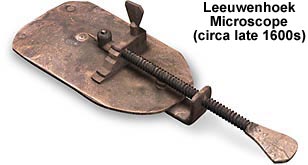 In an evolutionary sense, microorganisms have existed far longer than human beings have, and the pathogenic microbes have plagued human populations ever since they were large enough to sustain diseases. But the difference between antiquity and now is the actual knowledge we have of these incredibly small creatures existing and contributing to our lives, for better or for worse. Hippocrates of Ancient Greece started a school focusing on the commonality of symptoms presented in certain diseases, and even before then there was Neolithic fermentation of foods with bacteria, but in all instances the existence of microbes remained unknown; they were discovered in the late 17th century by a man named Van Leeuwenhoek, not even a scientist by trade.
In an evolutionary sense, microorganisms have existed far longer than human beings have, and the pathogenic microbes have plagued human populations ever since they were large enough to sustain diseases. But the difference between antiquity and now is the actual knowledge we have of these incredibly small creatures existing and contributing to our lives, for better or for worse. Hippocrates of Ancient Greece started a school focusing on the commonality of symptoms presented in certain diseases, and even before then there was Neolithic fermentation of foods with bacteria, but in all instances the existence of microbes remained unknown; they were discovered in the late 17th century by a man named Van Leeuwenhoek, not even a scientist by trade.Van Leeuwenhoek is known as the father of Microbiology. His profession, before becoming entranced with the world of microorganisms, was a draper: he sewed drapes. In order to better see the thread he was manipulating, he created a small lens that magnified what he viewed through it, in essence creating the first microscope. His world progressed from lovely threads to living things as he began to observe bees, lice, and plants all under his scope. In 1674 he observed protists, unicellular organisms that were previously unknown. In fact, others ridiculed him, and the Royal Society questioned his credibility at suggesting that such odd creatures were in existence. However, ignoring his critics, two years later he observed single-celled organisms of a different shape and character than protists; we know them as bacteria. These prokaryotic organisms were among the first life forms on earth, but only were just now being noticed by the human race. Microbiology, the study of microscopic forms of life, was born as the world’s eyes were opened to things that before they were not able to see.
Just as the innovative creation of the microscope led to the beginning of microbiology, other forms of technology continue to allow the expansion of this field today. As Dr. Wilson says, "Technology drives microbiology." He is a PhD graduate of Montana State University-Bozeman, who has researched and taught Immunology and Parasitology at Brigham Young University for over ten years. When I spoke with him about the development of microbiology, he emphasized that the more advancements we make in technology, or the more creative we get in using existing technology, the more we can learn about these small creatures. Currently in the lab, we utilize basics from syringes and scales to the bigger instruments like microplate readers, isothermal freezers, and multichannel pipettors. Advances in technology allow for more efficient and accurate laboratory work, which is needed before papers can be published and conferences can be conducted, and the information we gain can be communicated to the masses. It seems that within all the history of microbiology, what we need before we use rhetoric is the technological means to gain the knowledge we are to present.

Your description of microbes and microbiology was informative and very engaging. I really enjoyed the short biography of Leeuwenhoek because I could relate and it makes the readers ask themselves if they can participate in a seemingly complex world of bacteria and protist. Also, I LOVED the shout out to MSU-Bozeman, my hometown university.
ReplyDeleteFunny how most of the pioneers of a field were people dinking around with it for a completely unrelated reason. That was a trend I saw over and over again while doing my own research for this post.
ReplyDeleteI noticed the same thing as Eli when I was researching for my post. It helped me, at least, to recognize the interconnection of disciplines. I read something a long time ago about how people with mixed discipline training tend to do better out the job world, and your post definitely helps illustrate that.
ReplyDelete